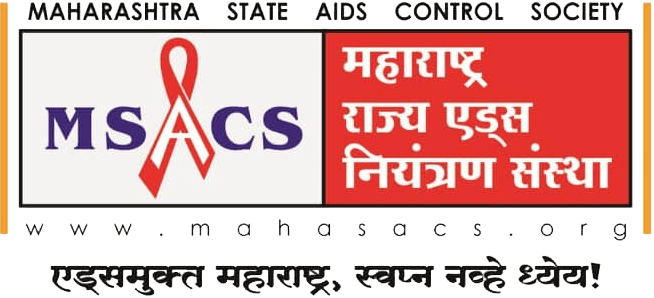Care and Support
The care, support and treatment needs of HIV positive people vary with the stage of the infection. The HIV infected person remains asymptomatic for the initial few years; it manifests by six to eight years. As immunity falls over time the person becomes susceptible to various opportunistic infections (OIs). At this stage, medical treatment and psycho-social support is needed. Access to prompt diagnosis and treatment of OIs ensures that PLHAs live longer and have a better quality of life.
Under NACP–II, focus was given on low-cost care, support and treatment of common OIs. Apart from further improving the availability, accessibility and affordability of ART treatment to the poor, NACP-III plans to strengthen family and community care through psycho-social support to the individuals, more particularly to the marginalised women and children affected by the epidemic, improve compliance of the prescribed ART regimen, and address stigma and discrimination associated with the epidemic.
To achieve this objective, 350 Community Care Centres are planned to be set up during the programme period (2007- 2012) in partnership with PLHA in high prevalence and moderate prevalence districts. These centres will be established based on the epidemiological profile and PLHA load of the districts, and linked to the nearest ART centre. The centres will provide counselling for drug adherence, nutritional needs, treatment support, referral and outreach for follow up, social support and legal services. State AIDS Prevention and Control Societies will ensure access of high risk groups to community care centres through linkages between TIs and the centres.
By strengthening local responses, NACP–III seeks high levels of drug adherence (>95 percent) and compliance of the prescribed ART regimen. This approach to care, support and treatment also creates awareness about the prevention of HIV infection and, thus, is a very significant part of NACP–III in achieving NACO’s mission of containing and reversing HIV/AIDS incidence in India.
Care and Support for Children
Approximately 50,000 children below 15 years are infected by HIV every year. So far, care and support response to these children was at a very minimal level. NACP–III plans to improve this through early diagnosis and treatment of HIV exposed children; comprehensive guidelines on paediatric HIV care for each level of the health system; special training to counsellors for counselling HIV positive children; linkages with social sector programmes for accessing social support for infected children; outreach and transportation subsidy to facilitate ART and follow up, nutritional, educational, recreational and skill development support, and by establishing and enforcing minimum standards of care and protection in institutional, foster care and community-based care systems.
Treatment
HIV infection is not the end of life. People can lead a healthy life for a long time with appropriate medical care. Anti-retroviral therapy (ART) effectively suppresses replication, if taken at the right time. Successful viral suppression restores the immune system and halts onset and progression of disease as well as reduces chances of getting opportunistic infections – this is how ART is aimed to work. Medication thus enhances both quality of life and longevity.
Adherence to ART is Critical
Adherence to ART regimen is therefore very vital in this treatment. Any irregularity in following the prescribed regimen can lead to resistance to HIV drugs, and therefore can weaken or negate its effect.
ART is Accessible to All
ART is now available free to all those who need it. Public health facilities are mandated to ensure that ART is provided to people living with HIV/AIDS (PLHA). Special emphasis is given to the treatment of sero-positive women and infected children.
When is ART Given?
ART is initiated depending upon the stage of infection. PLHA with less than 200 CD4 (while blood cells/ mm3) require treatment irrespective of the clinical stage. For PLHA with 200-350 CD4, ART is offered to symptomatic patients. Among those with CD4 of more than 350, treatment is deferred for asymptomatic persons.
Criteria for ART
| CD4 (cell /mm3) | Actions |
| < 200 | Treat irrespective of clinical stage |
| 200 – 350 | Offer ART for symptomatic patients Initiate Rx before CD4 drop below 200 cells/mm3 For Asymptomatic people * |
| >350 | Defer treatment in asymptomatic persons |
* If CD4 is between 200-250, this should be repeated in four weeks and treatment to be considered in asymptomatic patients.
There are 127 ART centres operating in the country as of June 2007. By 2012, 250 ART centres will become functional across the country in order to provide people living with HIV/AIDS better access to treatment.
Where are these ART Centres Located?
In order to make treatment more accessible ART centres are located in medical colleges, district hospitals and non-profit charitable institutions providing care, support and treatment services to PLHA. A PLHA network person at each of the ART centre facilitates access to care and treatment services at these centres. ART centres also provide counselling and follow up on treatment adherence and support through community care centres.
Paediatric Care and Support
The primary goal of paediatric prevention, care and treatment programme is to prevent HIV infection to newborns through Prevention of Parent to Child Transmission (PPTCT) and provide treatment and care to all children infected by HIV.


